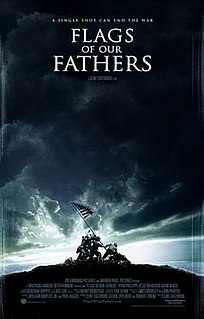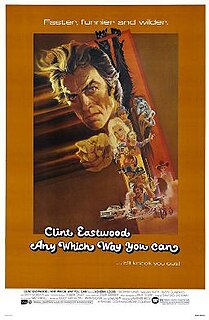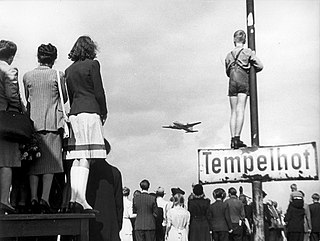
The Outlaw Josey Wales is a 1976 American revisionist Western DeLuxe Color and Panavision film set during and after the American Civil War. It was directed by and starred Clint Eastwood, with Chief Dan George, Sondra Locke, Sam Bottoms, and Geraldine Keams. The film tells the story of Josey Wales, a Missouri farmer whose family is murdered by Union militants during the Civil War. Driven to revenge, Wales joins a Confederate guerrilla band and fights in the Civil War. After the war, all the fighters in Wales' group except for Wales surrender to Union officers, but they end up being massacred. Wales becomes an outlaw and is pursued by bounty hunters and Union soldiers.

Dirty Harry is a 1971 American neo-noir action thriller film produced and directed by Don Siegel, the first in the Dirty Harry series. Clint Eastwood plays the title role, in his first outing as San Francisco Police Department (SFPD) Inspector "Dirty" Harry Callahan. The film drew upon the real life case of the Zodiac Killer as the Callahan character seeks out a similar vicious psychopath.
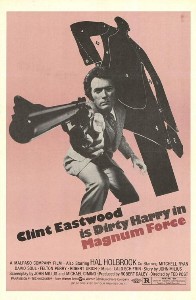
Magnum Force is a 1973 American action thriller and the second to feature Clint Eastwood as maverick cop Harry Callahan, after the 1971 film Dirty Harry. Ted Post, who also directed Eastwood in the television series Rawhide and the feature film Hang 'Em High, directed this second installment in the Dirty Harry film series. The screenplay was written by John Milius and Michael Cimino. The film score was once again composed by Lalo Schifrin. This film features early appearances by David Soul, Tim Matheson and Robert Urich.

Sandra Louise Anderson, professionally known as Sondra Locke, was an American actress and director. She made her film debut in 1968 in The Heart Is a Lonely Hunter, for which she was nominated for an Academy Award for Best Supporting Actress. Locke went on to star in such films as Willard, The Outlaw Josey Wales, The Gauntlet, Every Which Way But Loose, Bronco Billy, Any Which Way You Can and Sudden Impact. On each film, she had worked with Clint Eastwood, who was her companion for 13 years. Locke's autobiography, The Good, the Bad, and the Very Ugly – A Hollywood Journey, was published in 1997.
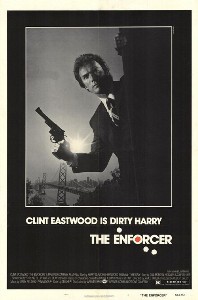
The Enforcer is a 1976 American neo-noir action thriller and the third in the Dirty Harry film series. Directed by James Fargo, it stars Clint Eastwood as Inspector "Dirty" Harry Callahan, Tyne Daly as Inspector Kate Moore, and DeVeren Bookwalter as terrorist leader Bobby Maxwell. It was also the last film in the series to feature John Mitchum as Inspector Frank DiGiorgio.

Every Which Way but Loose is a 1978 American adventure comedy film, released by Warner Bros., produced by Robert Daley and directed by James Fargo. It stars Clint Eastwood in an uncharacteristic and offbeat comedy role as Philo Beddoe, a trucker and brawler roaming the American West in search of a lost love while accompanied by his brother/manager, Orville, and his pet orangutan, Clyde. In the process, Philo manages to cross a motley assortment of characters, including a pair of police officers and an entire motorcycle gang, who end up pursuing him for revenge.

The Eiger Sanction is a 1975 American thriller film directed by and starring Clint Eastwood. Based on the 1972 novel The Eiger Sanction by Trevanian, the film is about an art history professor, mountain climber and former assassin once employed by a secret United States government agency who is blackmailed into returning to his deadly profession and do one more "sanction", a euphemism for killing. He agrees to join an international climbing team in Switzerland planning an ascent of the Eiger north face in order to complete a second sanction to avenge the murder of an old friend. The film was produced by Robert Daley for Eastwood's Malpaso Company, with Richard D. Zanuck and David Brown as executive producers, and co-starred George Kennedy, Vonetta McGee and Jack Cassidy.

Two Mules for Sister Sara is a 1970 American-Mexican western film directed by Don Siegel and starring Shirley MacLaine set during the French intervention in Mexico (1861–1867). The film was to have been the first in a five-year exclusive association between Universal Pictures and Sanen Productions of Mexico. It was the second of five collaborations between Siegel and Eastwood, following Coogan's Bluff (1968). The collaboration continued with The Beguiled and Dirty Harry and finally Escape from Alcatraz (1979).

Coogan's Bluff is a 1968 American action thriller film directed by Don Siegel, and starring Clint Eastwood, Lee J. Cobb, Don Stroud and Susan Clark. The film marks the first of five collaborations between Siegel and Eastwood, which continued with Two Mules for Sister Sara (1970), The Beguiled and Dirty Harry, and finally Escape from Alcatraz (1979).
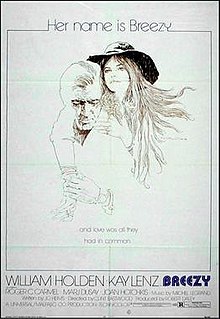
Breezy is a 1973 American romantic drama film, starring William Holden and Kay Lenz. It was written by Jo Heims, and was the third film directed by Clint Eastwood, who can be briefly seen in an uncredited cameo leaning on a pier wearing a white jacket.

Pink Cadillac is a 1989 American action comedy film about a bounty hunter and a group of white supremacists chasing after an innocent woman who tries to outrun everyone in her husband's prized pink Cadillac. The film stars Clint Eastwood and Bernadette Peters and also has small cameo appearances by Jim Carrey and Bryan Adams.
Clint Eastwood was born May 31, 1930 in San Francisco, California to Clinton Eastwood Sr. and Margaret Ruth.
This article details Clint Eastwood's film career from 1970 to 1979.
Clint Eastwood directed the film White Hunter Black Heart, an adaptation of Peter Viertel's roman à clef about John Huston and the making of the classic film The African Queen. The film received some critical attention but only had a limited release and earned just $8.4 million.
Clint Eastwood has had numerous casual and long-term relationships of varying length and intensity since he was 14 years old. He was first married to Margaret "Maggie" Johnson in 1953, but while dating Johnson, he had another relationship that allegedly resulted in a child that the mother gave up for adoption. He had extramarital relationships while married to Johnson, including a 14 year long relationship with actress and stunt woman Roxanne Tunis that produced a daughter. Johnson reportedly tolerated an open marriage with Eastwood. Eastwood and Johnson were divorced and he continued seeing many other women. In 1975, actress Sondra Locke began living with Eastwood. She took the relationship seriously and was extremely distraught when she discovered much later that Eastwood continued to have sexual relationships with other women. When they separated, Locke filed a palimony lawsuit. Eastwood had two children with stewardess Jacelyn Reeves in the 1980s. He married for the second time to news anchor Dina Ruiz in 1996, which lasted until 2013. He has been seen with other women since then.
Irving Leonard was an American financial adviser to Hollywood film stars of the 1950s and 1960s and an associate film producer.
Mike Hoover is an American mountaineer, rock climber and cinematographer. He first became known for an Academy Award nominated documentary short, Solo, of him climbing El Capitan as a lone climber. His first major involvement in commercial film was in The Eiger Sanction (1975) in which he taught Clint Eastwood how to climb in the Yosemite valley before the film was shot in Grindelwald, Switzerland in 1974. He has since been a cinematographer for the documentaries To the Ends of the Earth (1983), To the Limit (1989), The Endless Summer 2 (1994) and Zion Canyon: Treasure of the Gods. In the late 1980s, he made 18 trips to Afghanistan to shoot footage of the bloody war in the country. The footage was later featured in a program named The Battle for Afghanistan (1987). Hoover, who has been in charge of various film teams, has filmed all across the world, particularly physically and politically difficult filming locations, from the precarious rock faces of the Eiger, to filming Everest and K2, to canoeing in the Venezuelan jungle.
While serving in the U.S Army at Ft. Ord, California, Clint Eastwood met Chuck Hill, who had contacts in Hollywood. Chuck introduced Eastwood to a few key individuals. He knew little about acting at first and began attending acting classes at Universal Studios. He got a few small parts and began to take his acting career more seriously. His big break came when he was cast as the lead in the part of Rowdy Yates in the television series Rawhide.




